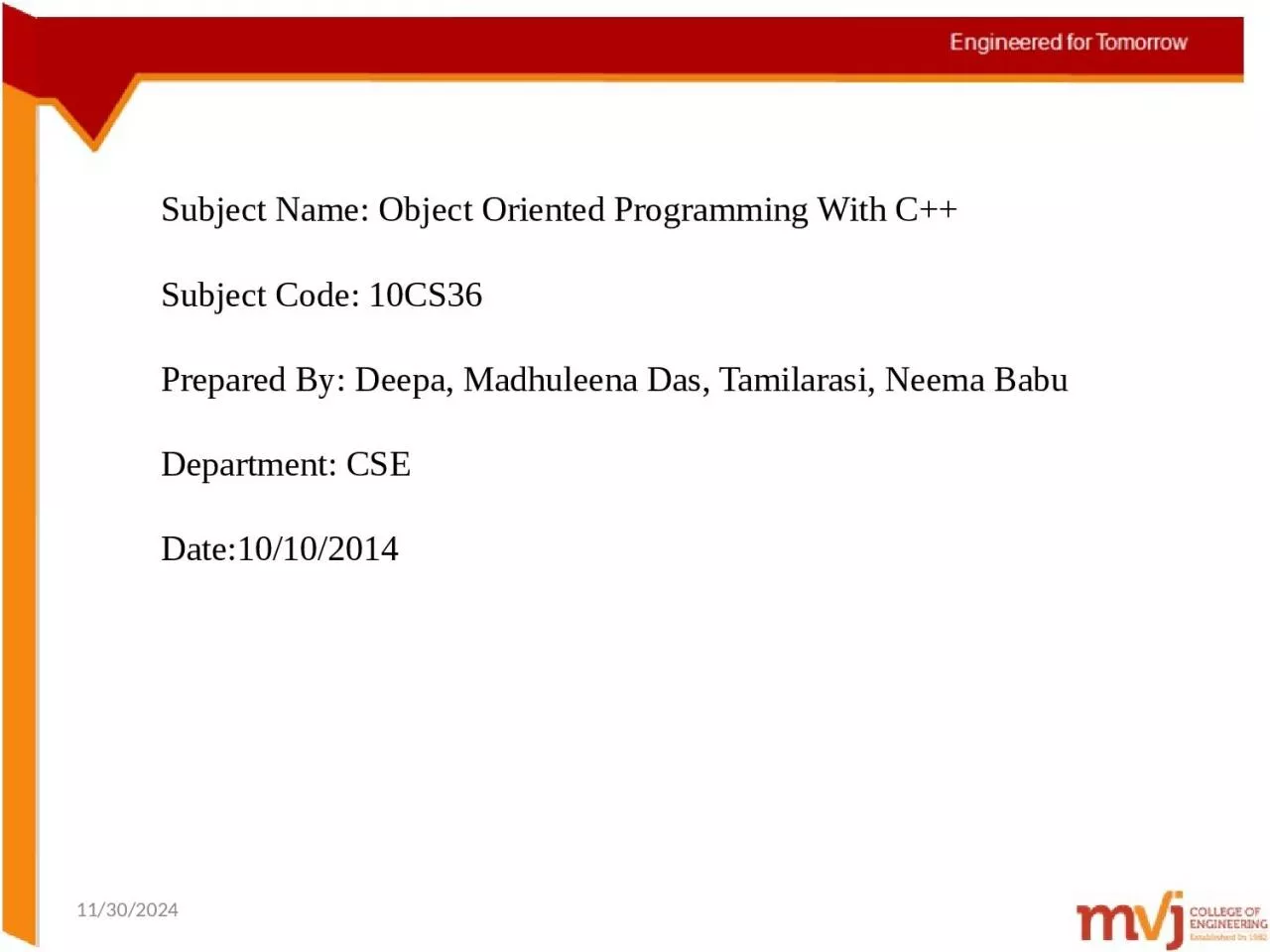PPT-
Author : shoulderheinz | Published Date : 2020-08-28
Subject Code 10CS36 Prepared By Deepa Madhuleena Das Tamilarasi Neema Babu Department CSE Date10102014 10102014 INHERITANCE II 10102014 Constructors Destructors
Presentation Embed Code
Download Presentation
Download Presentation The PPT/PDF document "" is the property of its rightful owner. Permission is granted to download and print the materials on this website for personal, non-commercial use only, and to display it on your personal computer provided you do not modify the materials and that you retain all copyright notices contained in the materials. By downloading content from our website, you accept the terms of this agreement.
: Transcript
Download Rules Of Document
""The content belongs to its owner. You may download and print it for personal use, without modification, and keep all copyright notices. By downloading, you agree to these terms.
Related Documents

